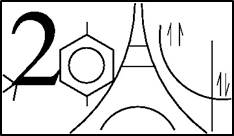The noble gas deficiency observed in Titan's atmosphere (Niemann et al. 2005) together with their non-detection in comets (Weaver et al. 2002; Iro et al. 2003) has led to the hypothesis that these objects could have been formed from planetesimals already impoverished in noble gases. The observed deficit in the afore-mentioned bodies could be due to the sequestration of the noble gases by H3+ during the early stages of the solar nebula (Pauzat et al. 2006; Mousis et al. 2008). However, other potential trapping agents, in particular the protonated ions issued from the interaction between H3+ and other species present in the same environment (mostly H2O, CO, N2) have to be considered.
A systematic approach was carried out to quantify the sequestration possibilities of Ar, Kr and Xe involving H3O+, HCO+, HOC+and N2H+. The structures and stabilities of the complexes were determined at increasing levels of theory, BH&HLYP, MP2, and CCSD(T) using extended basis sets. The geometries were optimized taking the BSSE corrections into account and the structures of these weak complexes were confirmed to be true minima by vibrational analysis. We found that all of them are acting as possible trapping agents for the three noble gases. A topological analysis of the ELF shows the evolution of the nature of the bonding between the protonated ion and the noble gas when going from Ar to Xe.
From an astrochemical point of view, these theoretical results led to revisit the planetary nebula evolution model. In these circumstances, one can predict that heavy noble gases can be efficiently sequestered by H3+ (and/or its derivatives) prior to their condensation epoch, implying that their abundances should be below the observational limit in Titan. The same scenario predicts that comets formed at high heliocentric distances should also be depleted in Kr and Xe.
|
|
|
Planning > Contributions par auteur > Ozgurel OzgeChemical Trapping of Noble Gases in the Protoplanetary Nebula
1 : Laboratoire de chimie théorique
(LCT)
-
Site web
CNRS : UMR7616, Université Pierre et Marie Curie (UPMC) - Paris VI, Université Pierre et Marie Curie [UPMC] - Paris VI
Tour 12-13, 4ème étage, 4 place Jussieu, Case Courrier 137, 75252 PARIS -
France
2 : Laboratoire de Chimie Théorique
(LCT)
-
Site web
CNRS : UMR7616
Tour 12-13, 4ème étage, 4 place Jussieu, Case Courrier 137, 75252 PARIS -
France
|
| Personnes connectées : 1 | Flux RSS |

|

 PDF version
PDF version